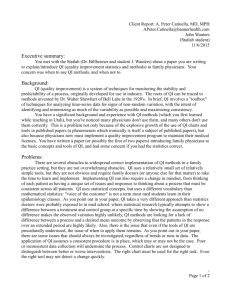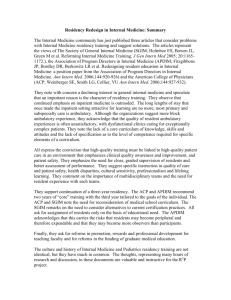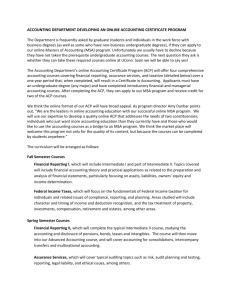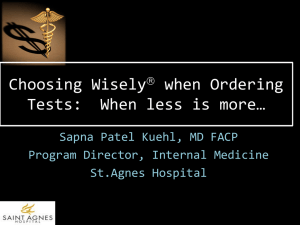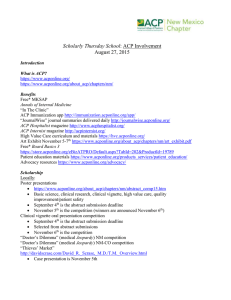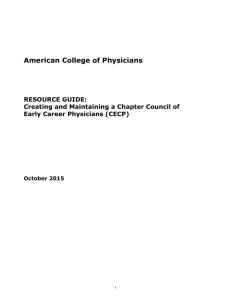ACP Advocacy - American College of Physicians
advertisement
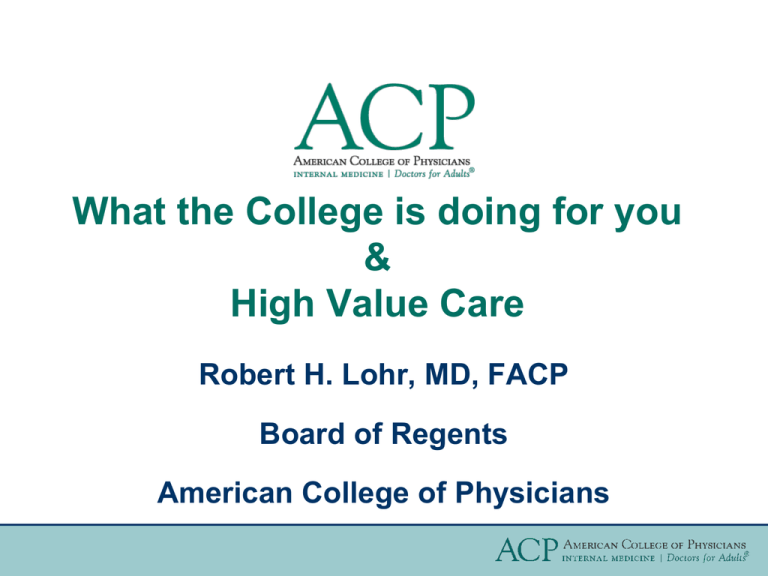
What the College is doing for you & High Value Care Robert H. Lohr, MD, FACP Board of Regents American College of Physicians Overriding Issues in Health Care Issue of the decade starting in 2000: quality of care and patient safety Issue of the decade starting in 2010: decreasing the cost of care Challenge: how to address both simultaneously Cost of Health Care CMS, Office of the Actuary, National Health Statistics Group Excess Cost Domain Estimates IOM. The Healthcare Imperative, 2010. It Is Our Ethical and Professional Responsibility to Control Cost From Medical Professionalism in the New Millennium: A Physician Charter (ABIM-F, ACP-F, EFIM) “While meeting the needs of individual patients, physicians are required to provide health care that is based on the wise and cost-effective management of limited clinical resources.” “The physician’s professional responsibility for appropriate allocation of resources requires scrupulous avoidance of superfluous tests and procedures. The provision of unnecessary services not only exposes one’s patients to avoidable harm and expense but also diminishes the resources available for others.” Ann Intern Med. 2002; 136:243-246 More Recent Reinforcement of the Same Principle From American College of Physicians Ethics Manual (6th edition) “Physicians have a responsibility to practice effective and efficient health care and to use health care resources responsibly. Parsimonious care that utilizes the most efficient means to effectively diagnose a condition and treat a patient respects the need to use resources wisely and to help ensure that resources are equitably available.” Ann Intern Med. 2012; 156:73-101. ACP’s Development of Policy on Resource Conservation ACP position paper, How Can Our Nation Conserve and Distribute Health Care Resources Effectively and Efficiently, challenges policy-makers to confront “unsustainable” costs Offers principles to engage the public in a process that ACP hopes will lead to consensus on conserving and allocating resources, based on the best evidence of value www.acponline.org/advocacy/where_we_stand/ policy/health_care_resources.pdf Conserving resources through rational care does not mean rationing Rationing: decisions are made about the allocation of scarce medical resources and who receives them, leading to underuse of potentially appropriate care Rational care: assuring that care is clinically effective, thus avoiding overuse or misuse of care that is inappropriate Overview of Goals for HVCCC Initiative Develop guidance for physicians about appropriate use of care, focusing initially on diagnostic testing • Assemble and integrate evidence-based and consensus-based recommendations Educate target audiences about areas of overuse and misuse of care • Practicing clinicians • Trainees (residents and medical students) • Patients Current Philosophy at ACP Focus now on the “low-hanging fruit”: interventions with low or no benefit, independent of cost Goal: reduce inappropriate care that does not help (or even harms) patients Ultimate outcomes: better patient care, reduced cost Annals of Internal Medicine Series Launched on February 1, 2011 Ann Intern Med. 2011; 154:174-180 Identifies 37 clinical situations in which a screening or diagnostic test does not reflect high value care. Ann Intern Med. 2012; 156:147-149. Methodology for Development of “Big List” Paper Each workgroup member (composed of ACP staff who are physicians as well as other ACP members who are physicians) proposed candidate scenarios of overuse/misuse of diagnostic testing Initial votes from all members agreeing or disagreeing with each item Unanimous vote scenario accepted If >2/3 support, discussed and modified; accepted if consensus Ann Intern Med. 2011; 154:181-189 Other National Initiatives ABIM Foundation: “Choosing Wisely” Campaign Archives of Internal Medicine: “Less is More” series HVCCC Curriculum for Residency programs Partnering with patients and patient advocacy group ACP’s Choice of 5 Overused Items for “Choosing Wisely” Campaign Screening exercise ECG in asymptomatic individuals at low risk for coronary heart disease Imaging studies in patients with non-specific low back pain Brain imaging studies (CT or MRI) for simple syncope and a normal neurological examination CT pulmonary angiogram as the first study in patients with low pretest probability of venous thromboembolism, rather than D-dimer Preoperative chest radiography in the absence of a clinical suspicion for intrathoracic pathology HVCCC and Residency Training Launched in July 2012 Habits start early in training → need to focus on students, residents, and fellows Joint initiative to develop HVCCC program for residents: AAIM, ABIM Foundation, and ACP http://www.acponline.org/education_rec ertification/education/curriculum/ Partnering with Patients Annals of Internal Medicine Summaries for Patients ACP Foundation’s Health TiPS Articles in lay press: “Pointless tests drive medical costs skyward” (op-ed in Philadelphia Inquirer, 6/9/11) Collaborations with consumer organizations (e.g., Consumer Reports) Do Physicians Agree That Health Care is Overused? Survey of primary care physicians Perceived factors leading to overuse 42% believe patients in their own practice are receiving too much care (vs. 6% who say “too little”) • Malpractice concerns: 76% • Clinical performance measures: 52% • Inadequate time to spend with patients: 40% Arch Intern Med. 2011; 171:1582-1585


